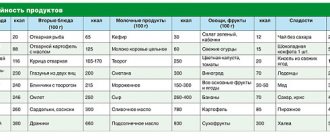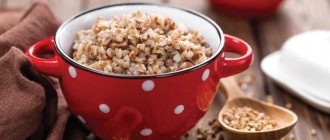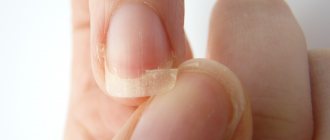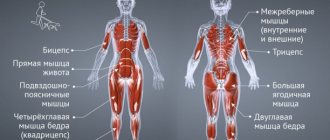Running is a popular means of losing weight. Many people decide to do it specifically with the goal of getting rid of extra pounds. Therefore, novice runners are often interested in the question of how many calories are spent and burned when running. It turns out that everything is not so simple, and a number of different nuances are involved in this process.
The head coach of the Marathonica running school, Ekaterina Preobrazhenskaya, explained how energy and calorie consumption during running works and what you need to know to make the most of this weight loss tool.
Don't want to read? Listen to this article on our podcast.
Running for a calorie deficit
First, let's figure out what determines weight gain and loss. If we consume more calories than we expend, the excess is stored in the body as fat. If, on the contrary, we spend more than we consume, then the extra pounds begin to fall off. Therefore, it is important to understand that losing weight does not depend on exercise as such, but on this negative calorie balance: if you exercise a lot, but at the same time eat even more, you will not be able to lose weight.
Another thing is that we can use running just to burn more calories. And then the question is quite reasonable - how much does it “burn”. In 30 minutes of running you can spend an average of 280 to 520 kcal. This figure depends mainly on weight and to a lesser extent on speed. Accordingly, the greater the weight and/or pace, the more energy will be spent. On the Internet you can find simple web calculators that calculate the number of calories burned during a workout.
What you need to run effectively to lose weight
In order to start jogging with the goal of losing weight, you only need desire and, at a minimum, comfortable sports shoes. Don’t forget to also consult your doctor about the amount of exercise you need, especially if you have any health problems.
You can choose the time and place for jogging yourself, taking into account your individual rhythm of life and opportunities. Remember to run at full strength, because the heavier you get, the more calories your body burns, and the effectiveness of your workout increases. However, you should not overexert yourself and sharply increase the load, because this can be fraught with danger to your health. Before you start running, you need to warm up, and then restore your breathing and cool down your body.
Even if you're not interested in how many calories you burn while running, but want to make your workout more efficient, you can alternate the intensity, pace, and length of your steps when running at different distances and on different surfaces. It is also useful to combine running with other aerobic exercise, not forgetting, of course, about proper nutrition.
Rules for effective jogging:
- Morning running is considered more useful, but no less effective than evening running;
- You need to run only before eating, and not vice versa;
- After a run, a contrast shower is useful;
- Always start with a warm-up and slow running, gradually increasing the load;
- During a run and immediately after it, you should not drink water, especially cold water, so as not to get sick;
- After a run, be sure to restore your breathing: combine walking with raising your arms up, while taking a deep breath;
- The greatest pleasure will come to you when running with your favorite music in headphones;
- Alternating running is a good way to increase the effectiveness of your workout, so combine jogging with shuttle running, slow running and regular running;
- If you have a cold, it is better to avoid running, especially if you have a fever.
When choosing sports shoes, pay attention to the fact that they are comfortable and loose enough. If you choose the right shoes, you can avoid painful sensations that may occur after finishing a run in the ankle joints.
Due to the fact that running is considered an intense load on the body, it is not recommended for everyone as a way to lose weight. Running is contraindicated in case of any injuries, disorders of the joints and spine, as well as diseases of the cardiovascular system. Therefore, before starting running training, it is imperative to consult a therapist. And if you want to enhance the positive effects of running while losing weight, seek help from a nutritionist who will select the optimal diet or special diet for you in accordance with the required number of calories. In this case, the result of losing weight will be obvious.
Where do calories come from?
During physical activity, different “materials” can be used to produce energy: usually fats or carbohydrates. Fats are the same subcutaneous reserves, and one gram of fat contains 9 kcal. Carbohydrates are stored as glycogen reserves in the muscles and liver, and one gram is equal to 4 kcal.
To put it very simply, when running at an aerobic pace (or slower), energy metabolism mainly involves fats. In other words, in order for predominantly fat reserves to “burn” during running, you need to run slowly - almost without shortness of breath, at a comfortable pace at which you can calmly speak in coherent sentences.
As the intensity of running increases and the heart rate increases, the body switches to using carbohydrates for energy production - and at a certain point begins to spend only them. It would seem that for weight loss this is a less interesting option than low-intensity running, but let's look at the details.
Basic Rules
It is impossible to answer exactly how much fat running burns, but you can increase the amount of energy spent by following these rules:
- You should not eat food before a run. It is advisable to do this 2 hours before classes. To speed up fat burning, you should eat foods such as celery, radishes, and grapefruit.
- After training, you are allowed to eat only 1 hour later. It is worth choosing foods that contain protein and polysaccharides.
- Try to run longer. To lose weight, it is recommended to spend at least an hour running.
- Drink plenty of water. You should drink water during and after running. With increased physical activity, the body requires moisture to stimulate the process of fat breakdown.
- Alternate between different types of running.
- Exercise regularly. The effect is based on constant exposure. Running should be done at least 2-3 times a week.
- Maintain proper nutrition. The diet should consist of healthy foods, paying special attention to vegetables and fruits.
Video
Calories are also burned after running
When running fast, the number of calories burned during the workout will be greater than when jogging. During high-intensity exercise, the effect of “oxygen debt” occurs, and after it, compensation for this debt occurs, or the so-called EPOC (excess post-exercise oxygen consumption).
Thus, after exercise, the body tries to recover and return to a state of balance, but it spends more oxygen than usual and thus consumes more energy at rest. During EPOC, up to 500 additional calories can be expended, and this increased oxygen consumption can last up to 48 hours.
If you add up the number of calories burned during a high-intensity workout and those calories burned after it, you get an impressive figure.
How many Calories do I need?
Every day you need a different amount of Calories. The easiest way to calculate how many calories you need is to calculate your Basal Metabolic Rate (BMR). This is the minimum amount of calories your body needs to function. Which can start from 1800 calories per day for an adult woman and 2400 calories per day for an adult man.
Table of calories needed for men and women depending on activity and age - HERE
BUT this doesn't even take into account the calories you need to compensate for activities like running, swimming, cycling or to recover after.
How to run to lose weight?
To summarize: if you run calmly, you will burn fewer calories in the same amount of time, but they will be spent primarily from fat. If you run fast, more calories will be burned, but their source will be glycogen reserves in the muscles and liver, and after such a workout the calories will be “burned off” for some time. At the same time, it is important to understand that it is simply impossible to constantly train in a high-load zone, since the body will not have time to recover, which will lead to overtraining and injuries.
Thus, the optimal option for constructing the training process would be to alternate loads of different intensity. This will allow the runner to recover, and will also help avoid the habituation effect, when the body adapts to the same type of loads, and their effectiveness decreases.
Why do I need to watch my calorie intake?
Because no two runners are alike. If you look at professional long-distance runners, they burn about 700 calories a day during training.
- Different body weights
- Volume of oxygen consumed
- Fast muscle fiber volume
all this affects the athlete’s calorie expenditure.
But since excess calories lead to excess weight, which can lead to serious health problems (including sleep problems and heart disease), it's still important to have a basic understanding of the amount of calories you eat and burn.
Run and eat right
Remember, if you are taking your first steps in running, then at first you need to train in the aerobic zone and gradually increase the volume and intensity of running. If your goal is to lose extra pounds, don't justify eating sweets or unhealthy foods because you're working out. After all, if you “compensate” for the calories spent while jogging, the desired effect will not occur.
Running is a great way to burn off extra calories and also improve your fitness, but it's important to remember that along with running you need to monitor the quality of your diet by choosing more natural foods.
What influences the effectiveness of training
Additional reasons that contribute to the rapid burning of lipids:
- Outside air temperature. The hotter the athlete, the faster intense sweating occurs. In winter, it is recommended to use special tracksuits that maintain a comfortable temperature. Stayer offers good models. The brand produces winter sports equipment that retains heat well, but does not provide a vacuum effect.
- Variable tempo To adjust, speed up and slow down the heartbeat, etc. additional energy is also required.
- Additional movements. They can be done with the arms (swings, circles) or with the legs, raising the knees or lunging with the legs.
- Get up off the ground. Lifting dependency is directly related to how many calories are expended running. A similar exercise is the ladder.
Use these techniques to control excess weight and strengthen your heart muscle.
Best time to burn calories
Many people choose to jog and walk in the evening to oxygenate their bodies before falling asleep. If you want to lose weight, it is better to run in the morning. At the same time, do not run after breakfast, but before it. By the way, walking also helps you lose weight.
Morning, when a person has just woken up, is the best phase of the day, as our body is exposed to energy. Carbohydrate depletion occurs in the morning and continues until we have breakfast or drink coffee.
Shortly before breakfast, the body saves glucose, allowing you to burn extra calories. When we run in the evening, our body has enough food and by running, you burn more glucose than calories.
Conclusion: we wake up early, do a proper warm-up and start running, then have breakfast.
How to Lose More Calories While Running
With constant stress, the body switches to habituation mode, consuming much fewer calories than in stress mode. The operating time must be long:
- Selecting an area with a different landscape, changing speed and even step length. The same effect will lead to a change in running technique: now - running, tomorrow - obstacle course, later - running in place, interval or sprint;
- If you add wide arm movements and knee lifts, calories will begin to burn in large quantities;
- You can cancel a run, but not for rest, but to perform various exercises - squats, pull-ups, pull-ups. From this point of view, you are not only using energy, but also those muscles that are not affected by running;
- If you listen to rhythmic music on the player, the load will be tolerated normally, and lethargy will become less noticeable. Music will help you distract yourself and cover long distances, that is, lose a lot of calories;
- You must not be fanatic. The body needs time to recover.











